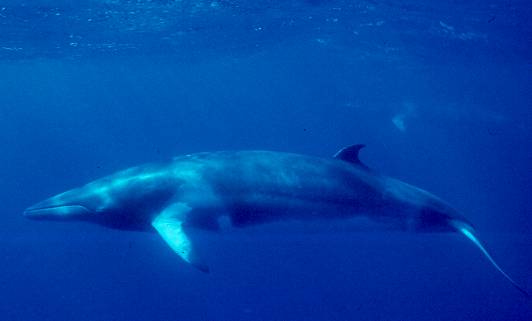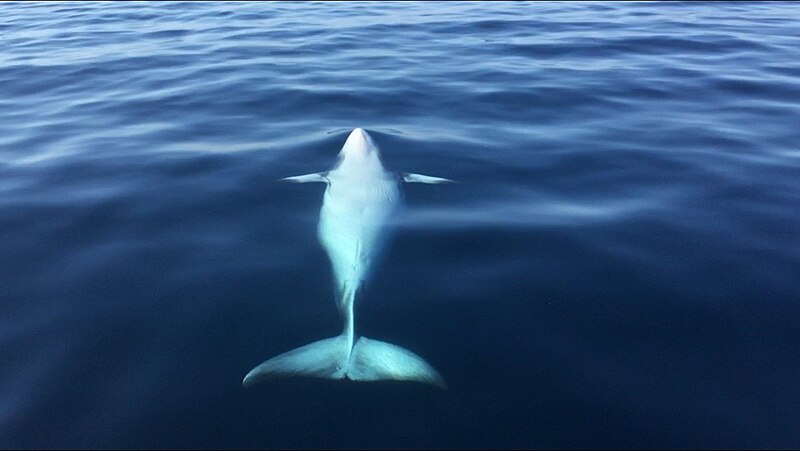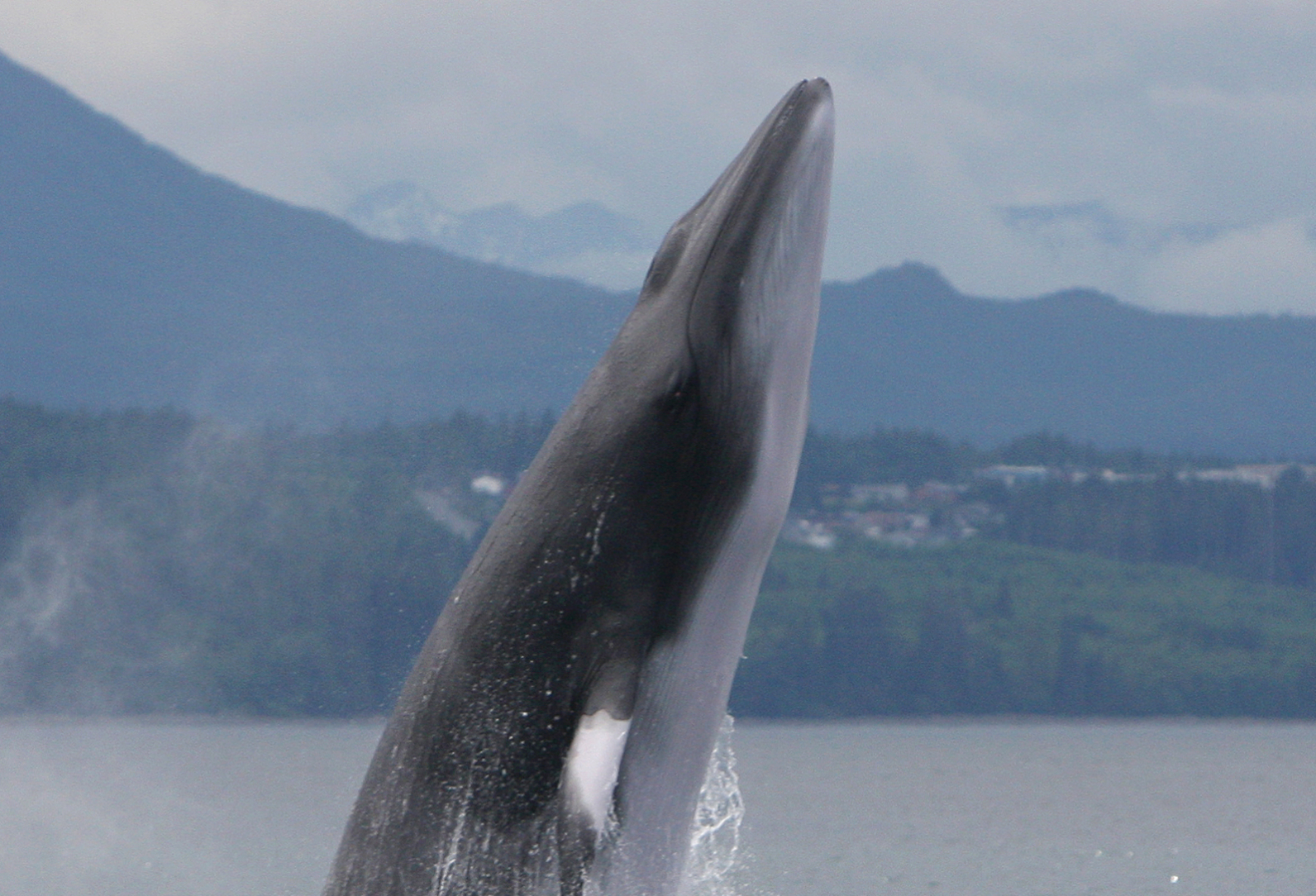As one of the smallest and most abundant baleen (filter-feeding) whale species, minke whales (Balaenoptera acutorostrata) play a vital role in the marine ecosystems and the cultures of coastal communities in the Northern Hemisphere.
First documented by Danish naturalist and explorer Otto Friedrich Müller in 1776, minke whales primarily feed on small fish, plankton, and krill. As the second smallest baleen whale species, after the Antarctic pygmy right whale, they reach maturity at seven to eight years old and attain a maximum average body length of eight meters and a weight of seven tons. Typically, they live between 30 and 50 years, though some individuals have been recorded living up to 60 years.
Minke whales are distinguished by white bands on each flipper, and they have between 240 and 360 filter plates on each jaw, depending on their age. Their stomach is divided into four chambers. Like other baleen whales, their feeding habits contribute to the “whale pump,” a mechanism that cycles nutrients from the deep ocean to surface waters. This vital process supports the proliferation of phytoplankton, which plays a key role in global carbon capture.
Owing to their size, the deaths and sinking of baleen whales create “whale falls,” where their carcasses provide unique, nutrient-rich habitats for deep-sea organisms in otherwise almost barren environments.
Throughout history, whales, including minke whales, have held a special place in the folklore, art, and traditions of many coastal cultures. In regions like the Arctic and North Atlantic, Indigenous communities have relied on whales for sustenance, crafting tools and ceremonial objects from their bones and baleen.
The global population of minke whales is divided into two main species: the common minke whale (Balaenoptera acutorostrata) and the Antarctic minke whale (Balaenoptera bonaerensis). These species are further subdivided into subpopulations based on geographic range. While the International Union for Conservation of Nature (IUCN) lists the common minke whale as being of “Least Concern,” the Antarctic minke whale is classified as “Near Threatened” due to pressures from climate change and human activity.
Historically, minke whales were not primary targets of commercial whaling due to their smaller size and lower yield of oil compared to larger species like blue or humpback whales. However, as larger whale populations were decimated by overexploitation during the 19th and early 20th centuries, commercial whalers shifted their focus to minkes. Intense whaling pressure in the mid-20th century caused significant population declines, particularly in the Southern Ocean.
Climate change has had profound effects on minke whales’ feeding and migration patterns, as their primary food sources, such as krill, are disrupted by warming oceans and shifting global distributions.
Noise pollution from shipping, military activities, and industrial development further threatens minke whales by interfering with their communication and echolocation, making it harder for them to navigate and locate food. Additionally, entanglement in fishing gear remains a significant cause of injury and mortality, particularly in heavily fished regions. Despite international regulations and public opposition, whaling for minke whales continues in countries like Norway, Japan, and Iceland.
International efforts have achieved some success in protecting minke whales, such as the International Whaling Commission’s (IWC) moratorium on commercial whaling (1986) and the Convention on Migratory Species (CMS). These initiatives have helped stabilize populations in the Northern Hemisphere.
In Britain, organizations like the Hebridean Whale and Dolphin Trust (HWDT) and the Marine Conservation Society (MCS) monitor minke whale behavior, migration patterns, and population numbers while advocating for an expanded network of marine protected areas (MPAs). However, this task is challenging due to the whales’ wide-ranging migratory habits, which are increasingly affected by shifting food distributions and ongoing whaling activities in nearby Scandinavian nations.
Minke whales are far more than majestic miniature giants of the sea, they are vital to ocean health and serve as ambassadors for the conservation of other baleen whale species worldwide.

Minke Whale (Balaenoptera acutorostrata)

Minke Whale on its back

Minke WhaleJared Towers
